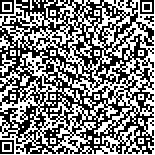透明帽辅助水交换结肠镜联合窄带成像内镜检查的临床应用价值
DOI:
作者:
作者单位:
宁波大学医学院附属阳明医院(浙江省余姚市人民医院) 消化内科,浙江 宁波 315400
作者简介:
通讯作者:
周建波,E-mail:cszlm2010@163.com
基金项目:
Clinical application value of transparent cap assisted water exchange colonoscopy combined with NBI examination
Author:
Affiliation:
Department of Gastroenterology, the Affiliated Yangming Hospital of Ningbo University (Yuyao People’s Hospital), Ningbo, Zhejiang 315400, China
Fund Project:
引用本文
蔡升,张芳芳,黄戬,桑建忠,宋奇峰,杨倩倩,周建波.透明帽辅助水交换结肠镜联合窄带成像内镜检查的临床应用价值[J].中国内镜杂志,2021,27(10):18-23
复制分享
文章指标
- 点击次数:
- 下载次数:
历史
- 收稿日期:2021-01-28
- 最后修改日期:
- 录用日期:
- 在线发布日期: 2021-11-03


